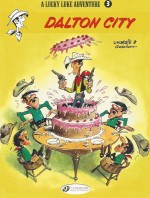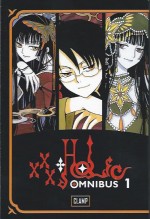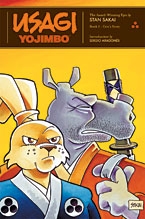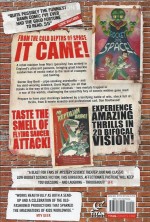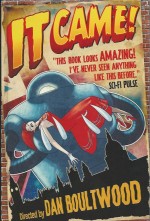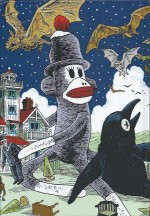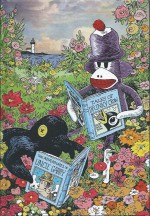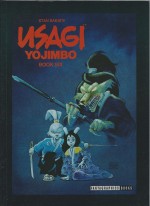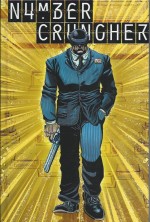

By John Liney, edited by David Tosh (Fantagraphics Books)
ISBN: 978-1-60699-733-8
Henry was one of the most venerated and long-lived of American newspaper comics strips. Created by veteran cartoonist Carl Anderson as a silent, pantomimic gag-panel first seen on March 19th 1932 for The Saturday Evening Post, it was picked up by the legendary strip advocate and propounder William Randolph Hearst who brought it and the then-69 year old Anderson to his King Features Syndicate in 1934. The first comic strip appeared on December 17th with a full colour Sunday half-page following on March 10th 1935.
The Saturday Evening Post had to content itself with a new feature entitled Little Lulu by Marjorie Henderson Buell. I wonder how that worked out…?
Being a man of advanced years, Anderson employed Don Trachte to assist with the Sundays whilst John J. Liney performed the same role for the Monday to Saturday black and white iteration. This continued until 1942 when arthritis forced Anderson to retire. Trachte and Liney became the de facto creators of the feature – although the originator’s name remained on the masthead for the next two decades.
Liney (1912-1982) had started as a staff cartoonist on the Philadelphia Evening Ledger and began selling gag ideas to Anderson in 1936 before landing the full-time assistant’s job. After assuming the illustrator’s role in 1942 he took over sole writing responsibilities for the daily in 1945, continuing Henry until 1979 when he finally retired.
His own name had been adorning the strip since 1970.
Liney was also a passionate teacher and educator on comics and cartooning, with a position at Temple University. Nevertheless he still found time to write and draw a comicbook iteration of the mute and merry masterpiece from 1946 to 1961.
Major licensing monolith Western Publishing/Dell Comics had been successfully producing comicbooks starring animation characters, film icons and strip heroes since the mid 1930s, and when they launched Henry – first in Four Color Comics #122 and #155 (October 1946 and July 1947) and then in his own 65 issue title from January 1948 – they successfully argued for a radical change in the boy’s make-up.
The newspaper strip had always been a timeless, nostalgia-fuelled, happily humour-heavy panoply of gags and slapstick situations wherein the frankly weird-looking little bald kid romped and pranked in complete silence, with superb cartooning delivering all the communication nuance the vast international audience needed.
Now however, with children seen as the sole consumers, the powers-that-be felt that the little mutant should be able to speak and make himself understood. Liney easily rose to the challenge and produced a sublime run of jolly, wild, weird and often utterly surreal endlessly inventive adventures – some approaching “Stream-of-Consciousness†progressions that perfectly captured the ephemeral nature of kids’ concentration. He also introduced a captivating supporting cast to augment the boy, and his appealingly unattractive, forthright and two-fisted inamorata Henrietta.
This splendid softcover collection gathers some of the very best longer tales from the comicbook run in the resplendent flat primary colours that are so evocative of simpler – if not better – days and begins after a heartfelt reminiscence in the Foreword by Kim Deitch, after which Editor, compiler and devotee David Tosh outlines the history of the character and his creators in ‘Henry – the Funniest Living American’.
He thengoes on to explain ‘The Dell Years’ before offering some informative ‘Notes on the Stories’.
The magical story portion of this collection is liberally interspersed with stunning cover reproductions; all impressively returning to the quiet lad’s pantomimic gag roots, a brace of which precede a beautiful double-page spread detailing the vast and varied cast Liney added to mix.
Then from issue #7 (June, 1949) we find ‘Henry is Thinking Out Loud!’ as the boy keeps his non-existent mouth shut and explores the medium of first person narrative, inner monologues and thought-balloons whilst getting into mischief looking for odd jobs to do…
October’s edition, Henry #9, introduced the good-natured, cool but increasingly put-upon Officer Yako in ‘You Can’t Beat the Man on the Beat!’ in an escalating succession of brushes with the law, bullies, prospective clients and darling Henrietta.
That bald boy still hadn’t actually uttered a sound, but by #14 (August 1950) he had found his voice, much to the amusement of his layabout Uncle (he never had a name) who eavesdropped on the assorted kids comparing their ‘Funny Dreams’.
After a quartet of covers Henry #16 (December 1950) found Liney playing with words as ‘Rhyme Without Reason’ found all the characters afflicted with doggerel, meter, couplets and all forms poetic with Liney even drawing himself into the madcap procession of japes and jests, whilst ‘A Slice of Ham’ from issue #22 (December 1951) cleverly riffed on Henry’s ambitions to impress Henrietta by becoming an actor. This yarn includes a wealth of Liney caricatures of screen immortals such as Chaplin, Gable, Sinatra and more, whilst introducing a potential rival for Henry’s affections in cousin Gilda…
In #24 (April 1952) Henry ‘Peeks into the Future’ by outrageously pondering on his possible careers as an adult, before plunging into Flintstone or Alley Oop territory – complete with cave city and dinosaurs – as a result of studying too hard for a history test in ‘The Stone Age Story’ from issues #29, February 1953.
After four more clever funny covers, growing up again featured heavily with ‘Choosing Your Career’ (#45, March 1956) as the little fool road-tested a job as a home-made cab driver and accidentally slipped into law enforcement by capturing a bandit.
In #48 (December 1956) Henry attended a fancy dress party and became ‘The Boy in the Iron Mask’, and this completely charming compilation closes by reprising that sojourn in the Stone Age with #49 (March 1957)’s ‘Rock and Roll’…
Concluding the comedy capers is fond personal reminiscence ‘Henry and Me’ by David Tosh; a man justifiably delighted to be able to share his passion with us and hopefully proud that this book gloriously recaptures some of the simple straightforward sheer joy that could be found in comicbooks of yore.
Henry Speaks for Himself is fun, frolicsome and fabulously captivating all-ages cartooning that will enthral anyone with kids or who has the soul of one.
Henry Speaks for Himself © 2014 Fantagraphics Books Inc. All comics and drawings © 2014 King Features, Inc. All other material © its respective creators. This book was produced in cooperation with Heritage Auctions.

